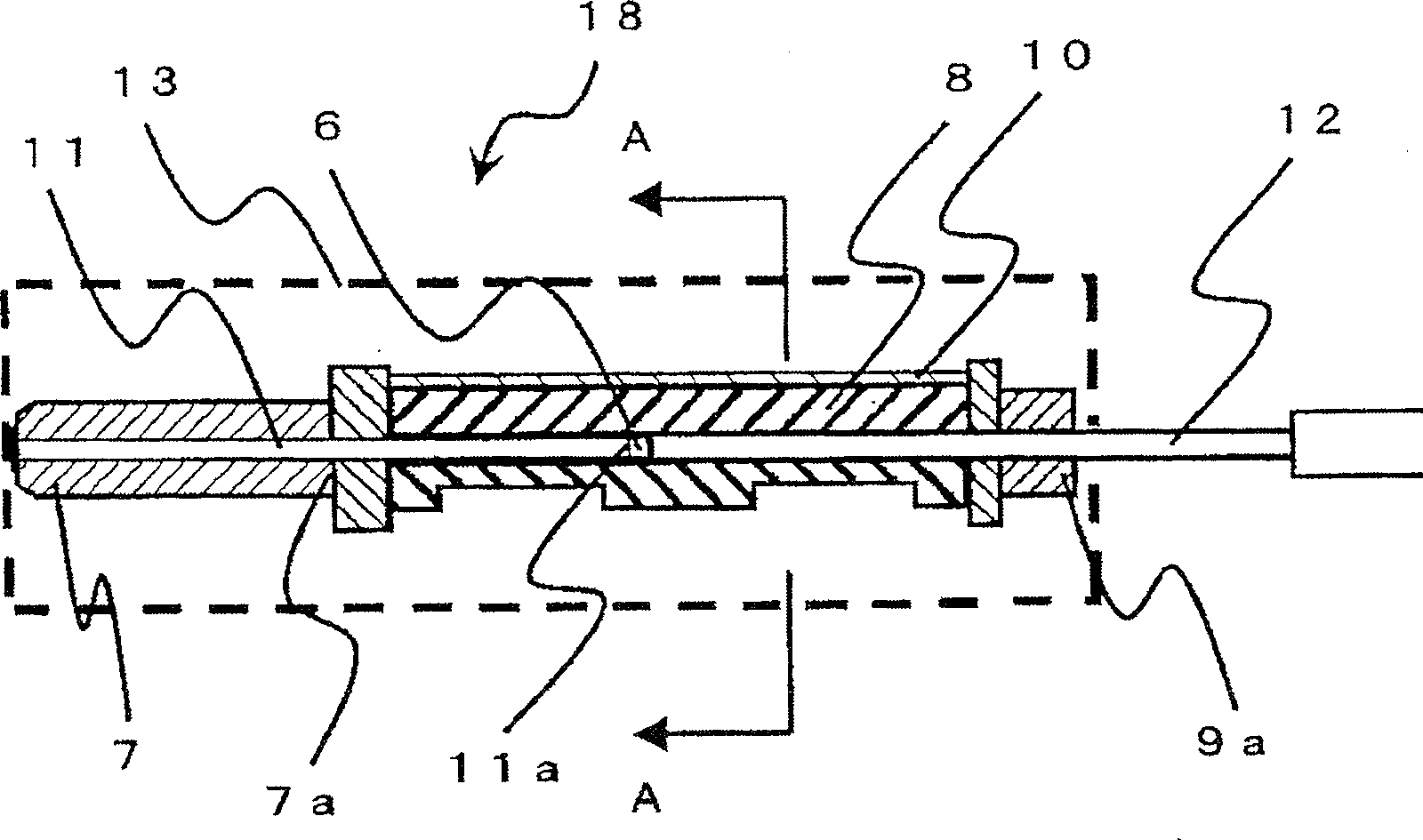An optical connector and a connection structure of optical fibers
An optical connector and connection structure technology, applied in the coupling of optical waveguides, etc., can solve the problems of reduced reliability, reduced refractive index integrating agent, pores or air bubbles on the fiber end face, etc., and achieves easy assembly and disassembly, excellent stability. Effect
- Summary
- Abstract
- Description
- Claims
- Application Information
AI Technical Summary
Problems solved by technology
Method used
Image
Examples
Embodiment 1
[0062] Next, a first embodiment of the present invention will be described.
[0063] As a cross-linking and curing type refractive index adjusting agent, 1.0 parts by weight of a cross-linking agent (manufactured by Nippon Polyurethane Industry Co., Ltd., trade name: Coronet L) was added to a mixture of n-butyl acrylate / methyl acrylate / acrylic acid / methyl acrylate. A solution obtained by mixing 50% ethyl acetate solution of an acrylic resin composed of 2-hydroxyethyl acrylate copolymer (composition ratio: 82 / 15 / 2.7 / 0.3 (parts by weight)).
[0064] For the crosslinked curable refractive index conformer after crosslinking and curing the acrylic adhesive material coating liquid (crosslinkable curable refractive index conformer) obtained as described above, measure the 1300-1600nm wavelength range with a spectrophotometer The result of light transmittance is 93-95%. In addition, as a result of measuring the refractive index of the cross-linked curable refractive index-modified bo...
Embodiment 2
[0074] Next, a second embodiment of the present invention will be described.
[0075] As a cross-linking curing type refractive index adjusting agent, an addition-type silicon-based adhesive material coating solution consisting of SD4590 / BY24-741 / SX212 / toluene (composition ratio: 100 / 1.0 / 0.9 / 50 (parts by weight)) was prepared (SD4590, BY24-741, and SRX212 are all manufactured by Toray Douko-Ninge Co., Ltd.).
[0076] Use a spectrophotometer to measure the wavelength range of 1300-1600nm of the crosslinked curable refractive index conformer after crosslinking and curing the addition type silicon-based adhesive material coating solution (crosslinked curable refractive index conformer) obtained above. The result of light transmittance is 92-94%. On the other hand, the result of measuring the refractive index of the cross-linked curable refractive index integrated body with an Abbe refractometer is within 1.465±0.005 at normal temperature (23±2° C.).
[0077] In addition, the el...
Embodiment 3
[0098] Next, a third embodiment of the present invention will be described.
[0099] As a cross-linking and curing type refractive index adjusting agent, 1.0 parts by weight of a cross-linking agent (manufactured by Nippon Polyurethane Industry Co., Ltd., trade name: Coronet L) was added to a mixture of n-butyl acrylate / methyl acrylate / acrylic acid / methyl acrylate. A solution obtained by mixing 50% ethyl acetate solution of an acrylic resin composed of 2-hydroxyethyl acrylate copolymer (composition ratio: 82 / 15 / 2.7 / 0.3 (parts by weight)).
[0100] For the crosslinked curable refractive index conformer after crosslinking and curing the acrylic adhesive material coating liquid (crosslinkable curable refractive index conformer) obtained as described above, measure the 1300-1600nm wavelength range with a spectrophotometer The result of light transmittance is 93-95%. In addition, as a result of measuring the refractive index of the cross-linked curable refractive index-modified bo...
PUM
 Login to View More
Login to View More Abstract
Description
Claims
Application Information
 Login to View More
Login to View More - R&D
- Intellectual Property
- Life Sciences
- Materials
- Tech Scout
- Unparalleled Data Quality
- Higher Quality Content
- 60% Fewer Hallucinations
Browse by: Latest US Patents, China's latest patents, Technical Efficacy Thesaurus, Application Domain, Technology Topic, Popular Technical Reports.
© 2025 PatSnap. All rights reserved.Legal|Privacy policy|Modern Slavery Act Transparency Statement|Sitemap|About US| Contact US: help@patsnap.com



